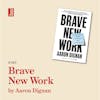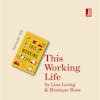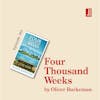The Long Game by Dorie Clark: why you need to do the right thing
About the author
Dorie Clark has been named one of the Top 50 business thinkers in the world by Thinkers50, and was recognized as the #1 Communication Coach in the world by the Marshall Goldsmith Leading Global Coaches Awards. Clark, a consultant and keynote speaker, teaches executive education at Duke University’s Fuqua School of Business and Columbia Business School, and she is the Wall Street Journal bestselling author of The Long Game, Entrepreneurial You, Reinventing You and Stand Out, which was named the #1 Leadership Book of the Year by Inc. magazine.
A former presidential campaign spokeswoman, Clark has been described by the New York Times as an “expert at self-reinvention and helping others make changes in their lives.” A frequent contributor to the Harvard Business Review, she consults and speaks for clients including Google, Microsoft, and the World Bank.
Source: https://dorieclark.com/about/
About the book
It’s no secret that we’re pushed to the limit. Today’s professionals feel rushed, overwhelmed, and perennially behind. So we keep our heads down, focused on the next thing, and the next, without a moment to breathe.
How can we break out of this endless cycle and create the kind of interesting, meaningful lives we all seek?
In The Long Game, Clark shares unique principles and frameworks you can apply to your specific situation, as well as vivid stories from her own career and other professionals’ experiences. Everyone is allotted the same 24 hours — but with the right strategies, you can leverage those hours in more efficient and powerful ways than you ever imagined. It’s never an overnight process, but the long-term payoff is immense: to finally break out of the frenetic day-to-day routine and transform your life and your career.
Source: https://dorieclark.com/longgame/
Big idea #1 — Do the right thing
This idea has a couple of different meetings. The right thing might be supporting a social movement, an equality position, or a climate change issue, even if there’s a short term cost. Dorie talks about interviewing someone who says of all the CEOs they’ve ever met, not one of them has not supported one of the issues in the public zeitgeist, However, many of them haven’t stood up publicly and supported those things because they’re too worried about the short term commercial or shareholder response to taking a strong position on a particularly tricky subject.
This short term thinking stops them doing the right thing and using their power to make a stand. Whereas, by taking a long term perspective and asking what the long term impact of taking a position on one of these issues might be, could yield greater results.
The right thing is also about not getting distracted. Doing the right thing is about avoiding shiny object syndrome (we all suffer from it at times) and might involve saying no to things that you do want to do. It’s relatively easy to say no to things we don’t want to do, but saying no to things we do want to do, but are going to distract us and get in the way of the things that we should be doing, is more difficult.
It takes courage to be a long term thinker. It takes courage to stand up and say no to things. It takes courage to stand up and have a position on a strong social issue. When you know there might be a short term “negative” impact to doing so.
We need to choose what we’re ok being bad at, in order to be a good at the thing that is important. This creates the difference between moving ten individual things an inch each, or one thing a mile. Which very much reminds me of Greg McKeown’s Essentialism concept.
Therefore, we need to set the right goals to focus on the right things. This might involve getting the right people in the right room, which can lead to the most unlikely of possibilities happening many months or years down the line — again requiring long term thinking.
Big idea #2 — Think in waves
Dorie talks about strategic over-indexing, or doubling down really on the things that will give the greatest return on investment into the future. You might want to split your time into heads up time or heads down time. Heads up time is when you’re looking for opportunities, you’re meeting people or going to events, whereas head down time is when you’re in deep work mode and focused on creating. Dorie sets herself three to six months blocks to be either heads up or heads down.
The other version of this, is the idea of waves. The four waves that you can be in are;
- Learning — improving your skills
- Connecting —going to events, joining groups, or networking
- Creating — getting work done
- Reaping — enjoying the benefits of your hard work (holiday anyone?)
I liked this idea of doing waves that you can just commit to for a few months at a time, and then switch modes and focus. Great for those of us who find the idea of focusing on one thing at a time a little painful.
Big idea #3 — Be patient
If there’s really one big idea from this book, it is being patient.
Sometimes it’s hard to tell if something’s not working, or if it’s just not working yet. We often hear the glib concept of people giving up just at the point that ‘it’ was going to happen and they were almost at their inflection point, but it’s really hard when you’re in that moment to know whether you’re on a hiding to nothing or just about to hit your stride. Especially if you’re not getting external validation and maybe you’re even getting actively being rejected from things as well.
Therefore you need strategic patience.
There will be a point of momentum, of exponential growth, and where the compound effect will kick in. Dorie sets out three questions that you can ask yourself if you’re stuck before that tipping point;
- why am I doing this?
- how has it worked for others?
- what do my trusted advisors say?
It’s easy to fall into the trap of constantly tweaking our strategies if we are getting stuck or feel like things aren’t working / aren’t going quick enough. Usually this results in us not ever really moving forward, just going round and round in little circles. We also need to start comparing, like for like; not comparing you at three years, to someone else at 20 years into a particular field or pathway that you’re choosing to take. Dorie goes as far to say that it takes a minimum of five years of consistent effort before you start to really see momentum building.
All of this requires rethinking failure, looking for different paths to the same desire or the same outcome, and potentially looking at alternative options.
For example, you’re writing a book but then the publishing deal falls through, or your co-author decides that they don’t want to do it anymore — disaster! But maybe not. Using an alternative option and asking yourself how you can leverage what you’ve already done so it’s not wasted would be a useful tactic. In that example you could approach another publisher, try a magazine or publication, turn the content into a series of talks or a course… there are multiple ways to rethink a setback (and might even become a better outcome).
Support my book habit: https://www.buymeacoffee.com/stephsbookshelf
See omnystudio.com/listener for privacy information.
Hey, have you subscribed to the bookmark newsletter? If you liked this, you might like my twice-monthly email with book reviews and ideas of what you should be reading, and listening to, next. Click here to subscribe.
Popular episodes
Here are some great episodes to start with.

















